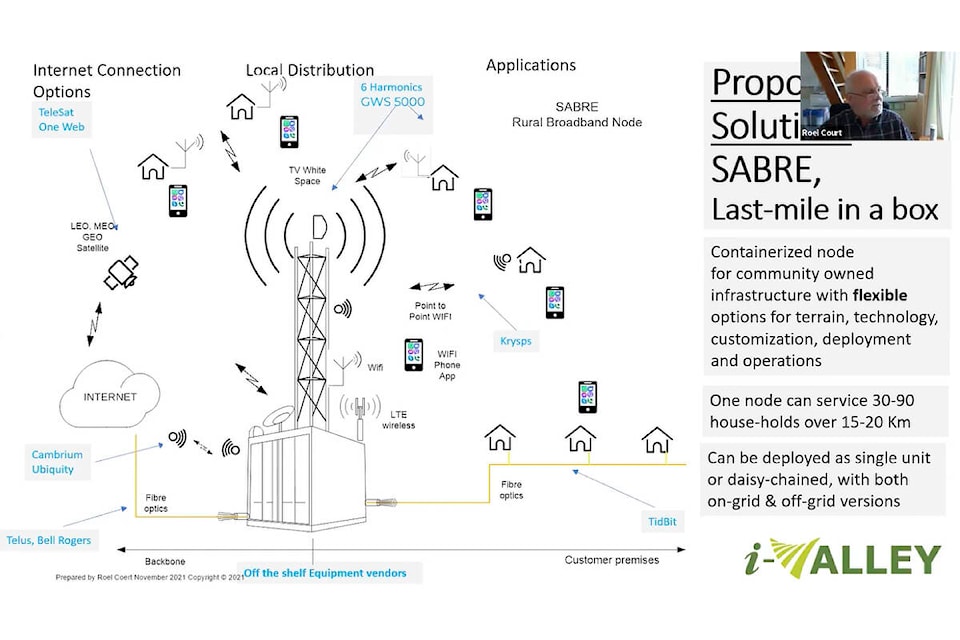The Thompson-Nicola Regional District is looking into the possibility of making high-speed Internet a public service.
The topic was discussed during the electoral area directors meeting on March 10, following a presentation from i-Valley, a not-for-profit association focused on providing broadband and high-speed Internet to rural communities in Canada.
Jamie Vieira, deputy general manager of operations for the TNRD, said just 15 per cent of households within the region’s rural areas have high-speed Internet. He also pointed to an announcement last week from the B.C. government that a joint investment of $830 million between the federal and provincial governments was needed to provide everyone with equal access to high-speed Internet over the next five years.
During the presentation, Roel Coert, vice president of i-Valley, explained a SABRE (Stand Alone Broadband for Rural Environment) system, a containerized node, is placed in the middle of a community. The system is then connected to homes either via existing fibre optic cable networks or through new cable installed through kits they provide. The container also has Wi-Fi and mobile components that can be utilized by the community.
About 30 to 90 houses over a 15 to 20-kilometre area can be serviced by these nodes, via a TV white space antenna, in addition to the homes connected by broadband.
But unlike current Internet services, the SABRE node would be owned and/or operated by the local government and community.
In this model, i-Valley would help the TNRD, for example, find capital funding for the node, taking the burden off the district and its taxpayers. They would then reach out to various local service providers to strike a deal, where i-Valley can utilize the existing broadband network, and the service provider leases the node from the local government to provide services to households.
i-Valley has supported systems in Coquitlam, New Westminster and Campbell River, and a pilot project of the SABRE node will be starting in Williams Lake later this year.
The TRND directors were interested in the system, asking questions about permitting, funding, consumer costs and ownership.
Director Mel Rothenburger (Rivers and the Peaks) noted that private companies, such as SpaceX and its Starlink system which started beta testing a few years ago in western and northern rural areas in North America, have been trying to enter the rural market. He was concerned how the SABRE system would fare in terms of costs to the consumer. Starlink systems require a hefty roughly $800 payment upfront for equipment, but the monthly cost is comparable to other providers in the area, like Xplornet and Mascon.
Coert said the monthly cost would be similar to what’s being seen already in the market, roughly $100 to $120 per month.
Barry Gander, i-Valley vice president and co-founder, added the upfront costs aren’t very high for the consumer. He also said a public system has the added benefit of being not-for-profit, meaning local governments can choose how and when systems are upgraded. It also makes the overall costs a lot cheaper.
The next step, Vieira explained to directors, is to look at how the system can be funded and how it will be structured, if not from a tax-based payment. He also noted that costs for unknown issues and maintenance would be covered in the subscription price to consumers.
“All that we need to do is figure out a way to get the infrastructure in place so those homes are connected and then after that, it takes care of itself,” he said, adding the funding announcement from the provincial government is one way a portion or all of the capital cost could be covered.
ALSO READ: TNRD board issues apology for actions of former CAO
ALSO READ: Kamloops Voters Society survey shows distrust in TNRD board
newsroom@clearwatertimes.com
Like us on Facebook and follow us on Twitter
